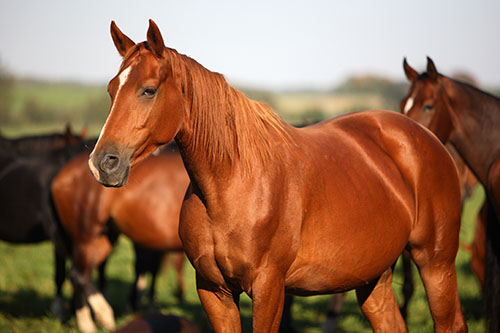Equine Nutrition Tips for Horse Muscle Recovery
Jul 26, 2021

Written by Dr. Dana Tomlinson, Global RNS Species Leader – Specialty Zinpro Corporation
These equine nutrition tips are great ways to positively impact your horse’s recovery after strenuous exercise:
For more content like this, check out the latest issue of the Cooperator.
These equine nutrition tips are great ways to positively impact your horse’s recovery after strenuous exercise:
- First and foremost, proper hydration (water) is important for muscle recovery and performance. If a horse is dehydrated, it likely negates anything else you do to try to help it recover. Without water, blood circulation is compromised, and nutrients can’t get where they need to go to aid in the healing/repair/recovery process. As we’ve mentioned in a separate post about proper hydration for horses, water is second only to air — always ensure your horse has access to plenty of fresh water. Dehydration, in and of itself, causes fatigue and slows down the recovery process.
- Another point to consider is proper conditioning with respect to muscle strength and endurance for the horse to withstand the workout. Horses that are well conditioned suffer less muscle fatigue and damage and require shorter recovery times. Part of the conditioning process is ensuring the horse’s nutrition is well-balanced and based on a forage intake of 1.5 to 2% of body weight supplemented with sufficient protein, energy, vitamins, and Zinpro Performance Minerals® to meet their workload. Recovery is all about how good the conditioning and preparation was prior to the event. If a horse isn’t properly conditioned, exercise can lead to increased inflammation, which redirects energy to heal damaged tissues and fuel the immune system. Inflammation, particularly chronic inflammation, will slow a horse’s recovery.
- As horses encounter greater physical activity and their workload and energy demands increase, their need for key trace minerals increases. Zinc, manganese, copper, and selenium are the primary minerals needed for production of strong muscles with high cellular integrity.
- Zinc is especially important as it plays a role with calcium enzymes in muscle contraction and nervous function. But more importantly, zinc is a key component in over 3,000 proteins and 300 enzyme systems in the body. So, zinc is foundational to many basic cellular functions involved in muscle production and function, immune response, and especially in the recovery process.
- Manganese is important for the formation, maintenance, and repair of joints, while copper is key to the formation of connective tissue (tendons and ligaments), bones, and cartilage lining joints.
- Selenium and Vitamin E play important roles as antioxidants, helping animals keep free radicals from oxidative stress in check. Oxidative stress is caused by overworking muscles and not allowing sufficient time for repair and recovery.
- Calcium, magnesium, and potassium are major players in maintaining muscle and nervous tissue communication and function.
- Fats are a key energy source in horses. Fats provide a slower, more energy-dense burn for greater endurance or sustained activity.
- Protein is needed to build and rebuild damaged muscle or hoof tissue. When considering protein needs in a horse’s nutrition plan, it’s important to provide an adequate supply of essential amino acids. Most equine nutritionists will first focus on the balance of lysine, methionine, and threonine, as these amino acids are often the most limited in the equine diet. Just note that you’ll want to avoid over-feeding protein, as an excess can reduce muscle glycogen (energy) supplies and increase diet cost.
- Overall, trace minerals help slow muscle damage and enhance the recovery process. While required in small amounts, equine trace minerals are involved in many enzyme systems that are key to muscle repair and reduction of oxidative stress.
- When a horse is hauled or transported over a long period of time, it may get fatigued by the journey. When a horse stands in a trailer that’s in constant motion, it has to continually use muscles to maintain balance. Even though the horse is not moving, it’s being forced to use core muscles and its whole body to stay upright. Therefore, it’s important to realize transported horses may burn significant energy simply through the trailering process.
- Some equine enthusiasts have begun to focus on low-starch diets. For horses that are maintenance-level, easy keepers, it’s perfect — these horses aren’t doing a lot, and a low-starch diet may help maintain normal weight. However, when considering horses with higher work intensities, low-starch diets may not be sufficient. Horses with greater work or exercise intensity have increased energy demands requiring greater glycogen stores and thus a need for sugar and starches to rapidly supply and replenish this key muscle energy source.
For more content like this, check out the latest issue of the Cooperator.